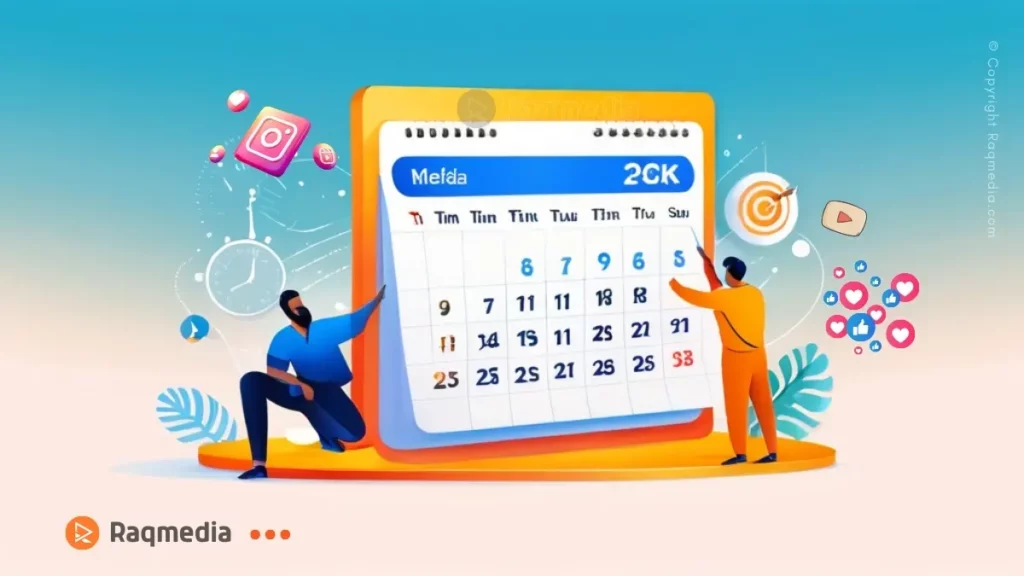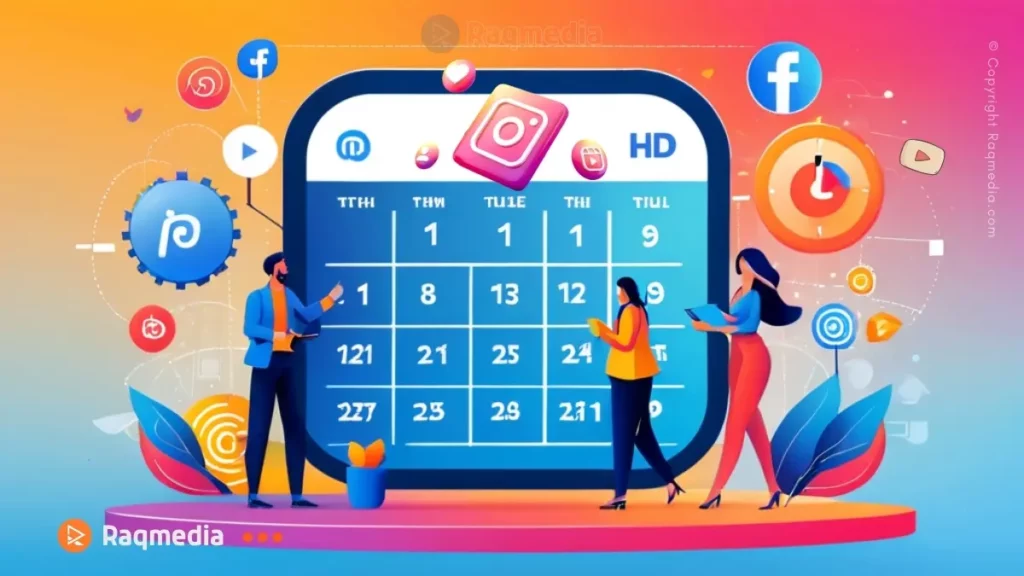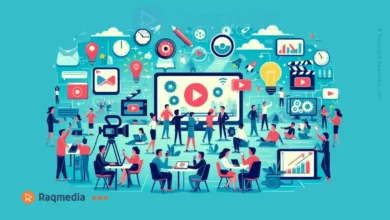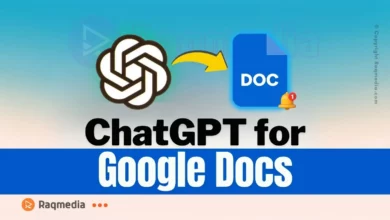In the labyrinthine world of social media, where attention spans flicker like neon lights, mastering the art of timing is akin to wielding a digital scepter. Welcome to the realm of Strategic Scheduling Demystified: A Data-Driven Approach to Conquer Social Media Timing. This analytical compass not only avails a sharper edge for social media managers and content creators but unveils a trove of insights waiting to be harnessed. Imagine navigating your way through user preferences and platform dynamics with the precision of a data-driven maestro – this is the canvas where strategic scheduling paints its most compelling strokes.
Mastering Social Media Timing
At the core of digital alchemy lies the crucial ingredient of timing—the catalyst that transmutes mere content into interactive gold. Diving deep into this paradigm, one confronts the pivotal role strategic scheduling plays in social media management's tapestry. The symphony of insights spun from data threads empowers decision-makers to orchestrate their posts at optimal moments when virtual crowds convene, hungry for engagement.

Brightening this path with illuminating data-powered strategies serves as both map and compass in these uncharted waters, debunking myths and offering a robust framework for those seeking mastery over social media timing's tempestuous seas. Join us on this voyage towards unravelling an age-old enigma with fresh eyes – armed not just with theory but practical tools ready to shape tomorrow's digital success stories.
Understanding Audience Behavior Patterns
In the realm of social media management, understanding audience behavior patterns is paramount to crafting effective digital strategies. Analytics tools play a pivotal role in unraveling these patterns by providing valuable data insights. By leveraging these tools, social media managers can pinpoint when their target audiences are most active online. For instance, platforms like Facebook Insights and Google Analytics offer detailed demographics and engagement metrics that enable marketers to discern peak hours for user activity. This knowledge equips them to align posting schedules with audience availability for maximum visibility and engagement.
Moreover, delving into content preferences serves as a determining factor in establishing optimal posting schedules. Different audience segments have varying preferences when it comes to content type, tone, and timing. Data-driven approaches allow marketers to decipher these preferences through analysis of engagement rates per content category. For instance, if analytics reveal that video content gains more traction during evenings while infographics are popular during daytime hours, tailoring posting schedules accordingly can significantly enhance the impact of social media campaigns. Understanding audience behavior not only ensures relevant content delivery but also boosts overall interaction rates.
By conducting an in-depth analysis of audience behavior patterns using advanced analytics tools, businesses can gain a competitive edge in the crowded social media landscape. When armed with actionable data insights, digital marketers can strategically plan their content calendars around peak activity hours while catering to specific content preferences of their audiences. This meticulous approach fosters a deeper connection between brands and consumers by delivering timely and personalized content experiences tailored to meet user expectations effectively. Ultimately, mastering the art of understanding audience behaviors empowers businesses to conquer social media timing challenges with precision and efficiency.
Peak Activity Hours Analysis
In the realm of social media management, understanding peak activity hours on various platforms serves as a pivotal factor in maximizing engagement and visibility. Peak activity hours denote the time slots when users are most active and receptive to content, presenting prime opportunities for brands to connect with their target audience. These high-engagement periods vary across platforms such as Facebook, Instagram, Twitter, and LinkedIn due to distinct user demographics and usage patterns.
Analytics tools play a crucial role in identifying these peak activity hours by tracking user interactions, clicks, and response times. By leveraging data-driven insights derived from these tools, social media managers can strategically schedule posts during these optimal windows to capitalize on heightened audience presence. For instance, a cosmetics brand might discover through analytics that its Instagram followers interact more during evening hours post-dinner time, prompting them to shift their content releases accordingly for maximum impact.

Adjusting posting times based on peak hours can significantly enhance reach and interaction levels. Take, for example, a tech startup aiming to increase its Twitter engagement rates. After analyzing data trends using specialized tools like TweetDeck or Hootsuite Analytics, the company may identify that its audience is most active between 10:00 AM to 12:00 PM on weekdays. By aligning their Twitter posts with these insights, the startup can witness a boost in retweets, likes, and overall engagement metrics due to increased visibility during peak activity periods.
Tailoring Content for Maximum Impact
In the realm of social media management, where timing can make or break engagement levels, tailoring content to resonate with both audience preferences and peak activity hours stands as a critical component in digital marketing success. Understanding that different audiences exhibit distinct behaviors at various times of the day is key to developing impactful content strategies. By aligning content themes with optimal posting times, businesses can enhance their visibility and connection with followers.
To achieve maximum impact, content creators must delve into data insights provided by analytics tools. These tools not only reveal when audiences are most active but also shed light on which types of content they engage with the most. For instance, a study conducted by a leading fashion brand showed that posting visually captivating content during evening peak hours led to a significant increase in user interactions compared to morning posts. This highlights the importance of synchronizing engaging visuals with peak activity periods to drive higher levels of audience engagement.
Successful case studies further demonstrate the power of personalized content strategies in boosting social media reach and interaction. A fitness app company experimented with tailoring workout tips and motivational quotes to coincide with early morning and late evening peak hours when users were most active on social platforms. The result was a surge in likes, shares, and comments, showcasing how tailored content resonating with audience behavior patterns can substantially elevate brand awareness and user engagement levels. Such examples underline the effectiveness of crafting content that aligns not only with audience preferences but also with specific times when users are most receptive to messaging.
Tools for Analyzing Data Insights
In the realm of optimizing social media timing through data-driven strategies, having the right analytics tools at your disposal is key to unlocking valuable insights. Various platforms offer a diverse array of tools tailored to analyze social media data with precision and depth. For instance, Google Analytics provides robust features for tracking website traffic sources originating from social media platforms, helping marketers understand the impact of their content across different channels. On the other hand, platforms like Sprout Social and Hootsuite offer comprehensive social listening and reporting functionalities that enable users to monitor conversations and engagement metrics effectively.
When selecting an analytics tool for analyzing social media data insights, it's crucial to assess specific business needs and objectives carefully. For businesses aiming to delve deep into audience sentiment analysis and trend forecasting, tools like Brandwatch or Talkwalker might be more suitable due to their advanced sentiment analysis capabilities and real-time monitoring features. Conversely, organizations emphasizing cross-channel performance tracking may find tools like Buffer or Socialbakers more aligned with their requirements as these platforms offer integrated solutions for managing multiple social accounts simultaneously.
To make an informed decision about choosing the most suitable analytics tool, consider factors such as budget constraints, user-friendliness, integration capabilities with existing systems, scalability options, and customer support services. Conducting a thorough evaluation of each tool's features in alignment with business goals will ensure that you invest in a solution that maximizes data insights efficiently. Remember that the effectiveness of your strategic scheduling decisions heavily relies on the accuracy and relevance of the data provided by these analytics tools—making the selection process a critical component of mastering social media timing through a data-driven approach.
Implementing Data-Driven Strategies
When it comes to implementing data-driven scheduling strategies for social media, a systematic approach is key to success. Firstly, start by establishing clear objectives based on insights gathered from analytics tools. Define what you aim to achieve through optimized timing – whether it's increased engagement, higher conversion rates, or improved brand visibility. Next, align these goals with your overall marketing strategy to ensure cohesion across all channels.
Integrating analytics findings into social media scheduling practices involves translating data into actionable steps. Identify peak activity hours and audience preferences uncovered by analytics tools and use this information to create a detailed posting schedule. Consider factors like time zones and seasonal variations that could impact user behavior patterns. By systematically incorporating these insights into your content calendar, you can maximize reach and impact.
Transitioning to a data-centric approach in social media management may present challenges such as resistance to change or initial complexity in interpreting data. To address this, provide comprehensive training to team members on how to leverage analytics tools effectively for scheduling decisions. Offer ongoing support and guidance as they adapt to the new methodology. Additionally, track performance metrics closely post-implementation and make adjustments as needed based on real-time data feedback. By proactively addressing challenges and iteratively refining your data-driven strategies, you set the stage for sustained success in optimizing social media timing.
Measuring the success of your social media scheduling strategies is crucial to refining and optimizing your approach for maximum impact. Key Performance Indicators (KPIs) serve as vital metrics in evaluating the effectiveness of your scheduling efforts. Engagement rates, click-through rates, and conversion rates are among the primary KPIs used to gauge the performance of social media posts. Engagement rates measure how actively your audience interacts with your content through likes, comments, and shares. Click-through rates indicate how successful your posts are at driving traffic to your website or landing pages. Conversion rates demonstrate the percentage of users who take a desired action after engaging with your social media content.
Continuous monitoring and analysis of these KPIs allow for data-driven decision-making when refining posting schedules. By regularly tracking engagement, click-through, and conversion rates across different time slots, you can identify patterns that highlight the most effective posting times. For example, if you notice a spike in engagement during early morning hours on weekdays but low activity over weekends, you can adjust your posting schedule accordingly to capitalize on these peak periods.
To refine your posting strategy based on performance data, consider using A/B testing methodologies where you publish different types of content at varied times to compare their effectiveness. By measuring how each post performs in terms of engagement, click-throughs, and conversions, you can fine-tune your schedule to optimize results further. Additionally, utilizing social media analytics tools that provide real-time data insights can streamline this monitoring process and offer actionable feedback for continuous improvement in your social media timing strategies.
Case Studies: Real-world Examples
In the realm of data-driven social media timing strategies, case studies provide concrete evidence of the impact of analytics-based scheduling. Take the case of Company X, a fashion brand that utilized data insights to identify optimal posting times on Instagram. By aligning their content schedule with peak activity hours identified through analytics tools, Company X saw a 30% increase in engagement within just two weeks. This success underscores the importance of leveraging data to refine posting schedules for enhanced audience interaction.
Another compelling example can be seen with Restaurant Y, which focused on tailoring content themes to match audience preferences during specific time frames. By analyzing customer behavior patterns using social media analytics, Restaurant Y discovered that sharing behind-the-scenes glimpses during lunch hours drove higher user engagement. This bespoke content approach led to a 25% increase in click-through rates during targeted hours, demonstrating how personalized strategies can yield significant results in social media timing optimization.
Analyzing these case studies reveals common threads among successful implementations of data-driven strategies. Businesses that embrace detailed audience analysis and adjust content based on peak activity hours tend to experience notable improvements in reach and engagement metrics. Moreover, the ability to adapt posting schedules dynamically based on real-time data insights not only boosts visibility but also fosters stronger connections with target audiences. These illustrative examples showcase how integrating analytics into social media management can drive tangible outcomes and inform future scheduling decisions for businesses striving for digital marketing success.
Future Trends in Social Media Timing
As we look to the future of social media timing strategies, advancements in technology and the increasing sophistication of user behavior analysis techniques are set to reshape how brands engage with their audiences online. One significant trend on the horizon is the continued integration of artificial intelligence (AI) into social media scheduling processes. AI-powered tools can analyze vast amounts of data at speeds unattainable by humans, enabling brands to make split-second decisions on optimal posting times based on individual user interactions. This personalized approach to scheduling holds promise for boosting engagement and conversion rates by delivering content when users are most receptive.

The application of AI in social media timing not only offers efficiency gains but also opens avenues for hyper-personalization. By leveraging AI algorithms that learn from user behaviors and preferences, brands can tailor their posting schedules down to a granular level, targeting audiences with precision timing that maximizes impact. For instance, predictive analytics models driven by AI can anticipate peak activity hours for specific segments of an audience, ensuring that content reaches them at the right moment for heightened engagement. This strategic alignment between content delivery and audience behavior is poised to revolutionize how businesses navigate the competitive landscape of digital marketing.
Moreover, as AI continues to evolve, we can expect more sophisticated features such as sentiment analysis and natural language processing to enhance social media timing strategies further. These technological developments will enable brands to not only schedule posts at optimal times but also craft messaging that resonates deeply with diverse audience segments. By harnessing AI-driven insights on sentiment trends and language nuances, marketers can refine their content strategies in real-time, adapting seamlessly to shifts in user preferences. The trajectory towards AI-driven personalization marks a pivotal shift in how businesses interact with consumers online, offering unprecedented levels of customization and relevance in every digital interaction.
Optimizing Social Media Timing Effectively
In the realm of digital marketing, mastering social media timing through data-driven strategies is a crucial element for success. By adopting data-driven approaches, businesses can harness the power of analytics to optimize their social media scheduling effectively. Leveraging analytics tools provides insights into audience behaviors, allowing marketers to pinpoint peak activity hours and tailor content for maximum impact. This strategic alignment between timing and content not only enhances visibility but also boosts engagement and conversions significantly.
The benefits of embracing data-driven strategies extend beyond just posting schedules; they lay the foundation for comprehensive digital marketing success. Understanding audience behaviors through data analysis empowers businesses to create personalized content that resonates with their target demographic at the most opportune times. By aligning content themes with optimal posting windows, brands can ensure that their messages reach the right people when they are most receptive, thereby increasing the likelihood of conversion.
By reinforcing the importance of leveraging analytics tools for deep insights, understanding audience behaviors for precise targeting, and tailoring content for maximum impact, businesses can achieve their digital marketing goals seamlessly. For instance, an e-commerce company utilizing data-driven social media timing saw a 30% increase in click-through rates by adjusting their posting schedule based on peak activity hours identified through analytics tools. This real-world example underscores how strategic scheduling decisions rooted in data can drive tangible results in terms of visibility and engagement.
In conclusion, unlocking the potential of social media timing through data-driven strategies is not just a competitive advantage; it has become a necessity in today's fast-paced digital landscape. Organizations that prioritize analytical rigor in their scheduling practices stand to gain enhanced visibility, increased engagement levels, and ultimately higher conversion rates. By combining advanced analytics tools with a nuanced understanding of audience behavior patterns and tailored content strategies, brands can navigate the complexities of social media timing with precision and achieve remarkable success in their digital marketing endeavors.
Final Tips
- Consistent Monitoring: To excel in data-driven social media timing, make monitoring a habit rather than an occasional task. Regularly review analytics reports to identify trends, audience engagement patterns, and content performance metrics. For example, if you notice increased engagement on Instagram during lunch hours for your target audience, adjust your posting schedule accordingly to capitalize on this peak activity period. Consistency in monitoring allows for timely adjustments that can significantly enhance the effectiveness of your social media strategy.
- A/B Testing: Experimenting with different posting times and content types using A/B testing methodologies can provide valuable insights into what resonates best with your audience. By running controlled experiments where variables are systematically changed and compared, you can determine the optimal combinations for maximizing reach and engagement. For instance, try posting a video on Facebook in the morning versus a carousel post in the evening to gauge which format generates higher interaction rates. This methodical approach helps fine-tune scheduling decisions based on empirical data rather than assumptions.
- Automation Integration: Streamline your data-driven scheduling efforts by leveraging automation tools that allow for seamless content distribution at optimal times. Platforms like Hootsuite, Buffer, or Sprout Social offer features that enable scheduled posts based on pre-defined time slots derived from data analysis. By automating routine tasks such as post scheduling, monitoring comments, or analyzing key metrics, you can devote more time to strategizing and refining your social media campaigns. Automation not only increases efficiency but also ensures timely execution of planned content releases for maximum impact.
These practical tips aim to enhance your understanding of strategic scheduling through a data-driven lens and empower you to harness the potential of social media timing for achieving marketing objectives effectively.
Mastering Social Media Timing for Digital Success
In this comprehensive guide, we have delved into the world of data-driven strategies to optimize social media timing successfully. By understanding audience behavior patterns, pinpointing peak activity hours, tailoring content for maximum impact, leveraging analytics tools effectively, and measuring success metrics with precision, digital marketers can revolutionize their approach to social media scheduling.
As you embark on implementing these insightful tactics into your social media management arsenal, remember the power of strategic scheduling in enhancing visibility, engagement, and ultimately conversions. Embrace the data-driven era to refine your posting schedules with confidence and agility.
FAQs:
Q: How can I identify peak activity hours on different social media platforms?
A: Utilize analytics tools like Facebook Insights or Twitter Analytics to identify peak engagement periods specific to each platform.
Q: What are some key performance indicators (KPIs) for evaluating social media timing strategies?
A: Key metrics include engagement rates (likes, shares), click-through rates (CTR), conversion rates, and overall reach.
Q: How do I tailor content for optimal impact based on audience preferences?
A: Analyze content themes that resonate well with your audience demographics and align them with peak activity hours identified through data analysis.
Q: Are there free analytics tools available for smaller businesses or individuals?
A: Yes, platforms like Google Analytics and native insights provided by social media networks offer robust analytics functionalities at no cost.
Q: How often should I fine-tune my posting schedule based on performance metrics?
A: Regularly monitor your KPIs and adjust your posting times accordingly; aim for a balance between consistency and adaptability.










🌟 Mastering Social Media Timing: A Guide to Effective Posting 🌐🕒
📢 Elevate your online presence with expert tips and strategies. 💡 Follow us for more insights and give us a thumbs up! 👍 Dive into the article here:
The Art Of Cadence: Creating Consistent Posting Rhythms On Social Media
.
https://www.raqmedia.com/mastering-social-media-timing/
.
#raqmedia #socialmedia #posting #strategy #digitalmarketing #branding #engagement #contentstrategy